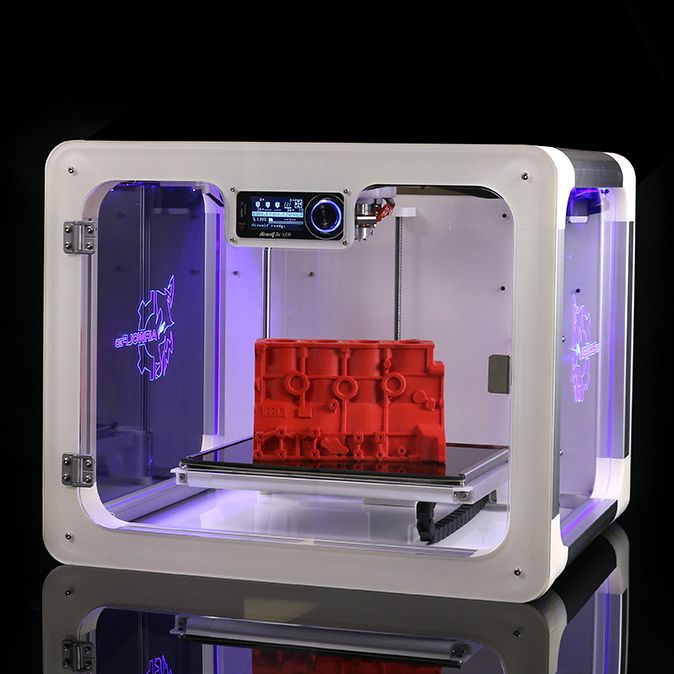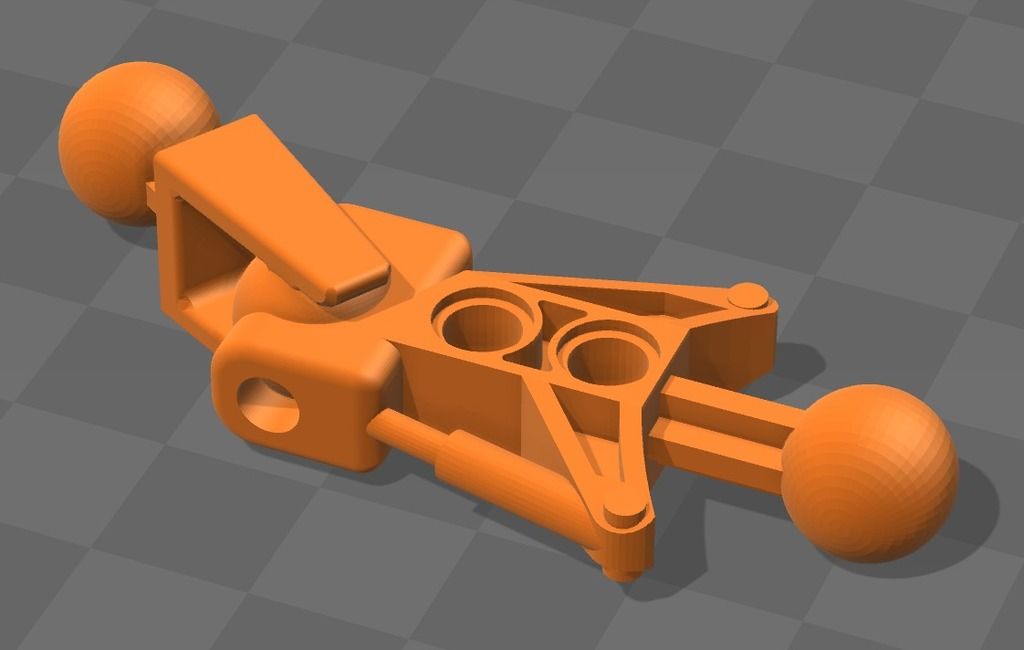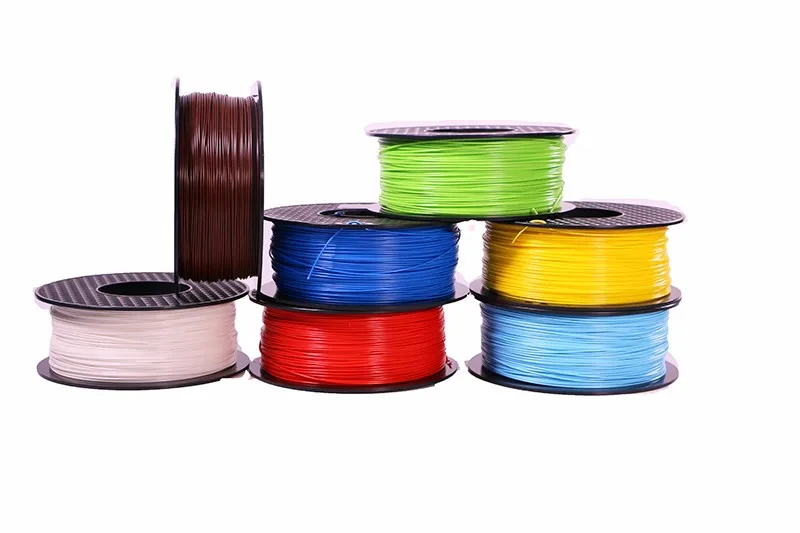Best 3d printing modeling software
Software for 3D Printing - 3D Modeling Software/Slicers/3D Printer Hosts
An Overview Of The Best 3D Printing Software Tools
Every 3D print begins as a 3D model generated in a modeling program. Years ago, we had to spend lots of money and time to acquire and learn modeling software. Now, there are many easy-to-use modeling software options available, many of which are free. This list includes some of the best options and is sorted by price, with the free ones sorted alphabetically.
The list also indicates whether the software uses solid modeling, a type of 3D modeling that always generates models that are “manifold” or “water tight.” A manifold model is one in which all walls of the model have some thickness, which is necessary for 3D printing. By contrast, software that uses polygon modeling can generate walls that have zero thickness; that’s fine for creating computer graphics for games and movies but not useful when 3D printing the models. Manifold models can be created with polygon modeling software, it just takes more steps and experience. All the software in this list can create 3D printable models, but every model that comes out of solid modeling software is 3D printable.
Additionally, we’ve noted what skill-level of user each software is designed for: beginners, amateurs, advanced users, and professionals. In general, the easiest to use options are near the top and the most powerful options tend to be near the bottom, though there are some outliers found throughout. Most of these software can be tried for free and there are free tutorial videos available for all of them.
Quick jump to:
3D Modeling Software
- Shapr3D
- Tinkercad
- Blender
- BRL-CAD
- DesignSpark Mechanical
- FreeCAD
- OpenSCAD
- Wings3D
- 3D Slash
- SketchUP
- Fusion 360
- MoI 3D
- Rhino3D
- Modo
- Cinema 4D
- SolidWorks
- Maya
- 3DS Max
- Inventor
Slicers & 3D Printer Hosts
- Ultimaker Cura
- Simplify3D
- Slic3r
- Repetier
- KISSlicer
- ideaMaker
- OctoPrint
- 3DPrinterOS
3D Modeling Software
These tools are all about creating models for 3D printing. Some of them are pretty easy to use while other programs are only suitable for professional users with years of experience.
Some of them are pretty easy to use while other programs are only suitable for professional users with years of experience.
Shapr3D CAD Modeling
- Price: Free, $239/year for professional
- Solid modeling: Yes
- Intended for: Beginners and Professional
- What makes it special: An intuitive multi-device CAD experience allows you to design anywhere with ease.
Shapr3D is superb for professionals and hobbyists alike. It has an extremely intuitive and innovative user interface which will allow you to create models faster with the same high level of precision.
With their Visualization feature you’ll also be able to preview models in AR to ensure that your print will be perfect in its intended location.
Shapr3D is available on iPad, Windows, and Mac – and it will keep your files synced between them! I would 100% recommend checking them out.
Tinkercad
- Price: Free
- Solid modeling: Yes
- Intended for: Beginners
- What makes it special: It’s designed to allow anyone to create 3D printable models and serves as an introduction to solid modeling.

This is a browser-based 3D design app geared towards beginners. The software features an intuitive block-building concept, allowing you to develop models from a set of basic shapes. Tinkercad is full of tutorials and guides to aid any aspiring novices get the designs they’re looking for. It even allows you to share and export files with ease.
With a library of literally millions of files, users can find shapes that suit them best and manipulate them as they wish. It also has a direct integration with 3rd party printing services, allowing you to print and have your print at your door-step at the press of a button. Even though it can be a bit too simple to the point of limitation, it serves as a great way to learn about 3D modeling.
Blender
- Price: Free
- Solid modeling: No
- Intended for: Amateurs and advanced users
- What makes it special: It’s open source, feature-rich, and includes tools for sculpting, animation, simulation, rendering, motion tracking, and video editing.

In essence, Blender covers many facets of 3D creation, including modeling, animation, and simulation amongst others. This open-source software has a steep learning curve and is ideal for users who feel ready to transition to designing complex 3D models. Check out our Blender tutorials for 3D Printing page.
Blender is actually a free 3D modeling software which was originally for 3D animation and rendering using polygonal modeling techniques. Despite its origins as a software for artists, it is considered quite accessible. One of the software’s interesting features is the photorealistic rendering option. This gives the models an air of realism that few free software can achieve.
BRL-CAD
- Price: Free
- Solid modeling: Yes
- Intended for: Advanced users
- What makes it special: Developed and used by the US Army to support ballistic and electromagnetic analyses.
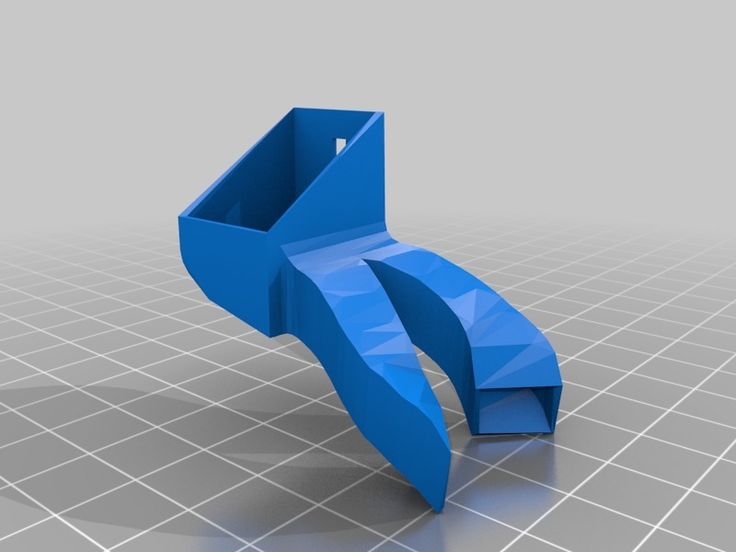 Also includes ray tracing and geometric analysis tools.
Also includes ray tracing and geometric analysis tools.
This open-source software is an advanced solid modeling system with interactive geometry editing. It is apparently used by the U.S. military to model weapons systems, showing that it is quite dependable but also very advanced. BRL-CAD offers a high level of precision due to its use of specific coordinates to arrange geometric shapes.
It offers a large library of simple and complex shapes users can implement into their own designs. They can take multiple shapes and combine them at their leisure, as well. The software used to be quite costly, however it was converted to open source a few years ago. It includes over 400 tools in its arsenal. It also runs at great speeds, especially considering how dense its features are.
DesignSpark Mechanical
- Price: Free
- Solid modeling: Yes
- Intended for: Amateurs and advanced users
- What makes it special: A library of 3D models from industrial suppliers and the ability to generate a bill-of-materials for designs.
 Electrical and PCB CAD tools are also available.
Electrical and PCB CAD tools are also available.
This nifty and free CAD software is ideal for professionals and advanced hobbyists alike. The user interface is relatively straightforward and the software runs quickly, meaning efficient designing. You also have the capability to generate a bill-of-materials that calculates the cost of printing potential 3D design projects.
DesignSpark Mechanical allows users to utilise an in-built library to mix with own drawings. Another feature that new users might find useful is the pull feature that allows users to create 3D models from only a surface. It is feature-rich for a free software and quite beginner-friendly.
FreeCAD
- Price: Free
- Solid modeling: Yes
- Intended for: Amateurs and advanced users
- What makes it special: Models are fully parametric and recalculated on demand with an undo/redo stack. Other features include robotic simulation, architectural tools, and a path module for CAM (Computer Aided Manufacturing).
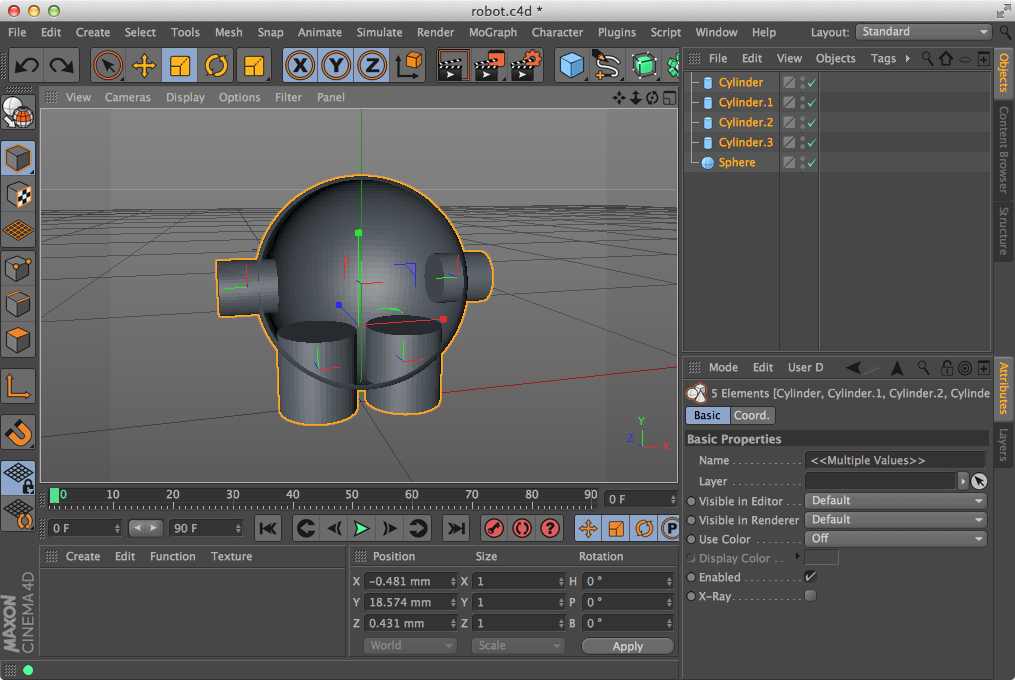
A parametric 3D modeling tool that is open-source and enables you to design real-life objects of any size. The parametric component makes editing your design a piece of cake. Simply go to your model history and change the parameters, and you’ll have a different model. As the name suggest, it is in fact totally free. The upside of this is that none of the tools are blocked behind a pay wall, so you can tweak your models to your heart’s desire.
It’s not the best for professional purposes, but it’s a great training tool. Despite it’s basic options and design elements it’s worth a try if you’re new and don’t want to have to invest in something before you dip your toe in the water.
OpenSCAD
- Price: Free
- Solid modeling: Yes
- Intended for: Amateurs and advanced users
- What makes it special: Designed for programmers, models are generated through typing scripts.
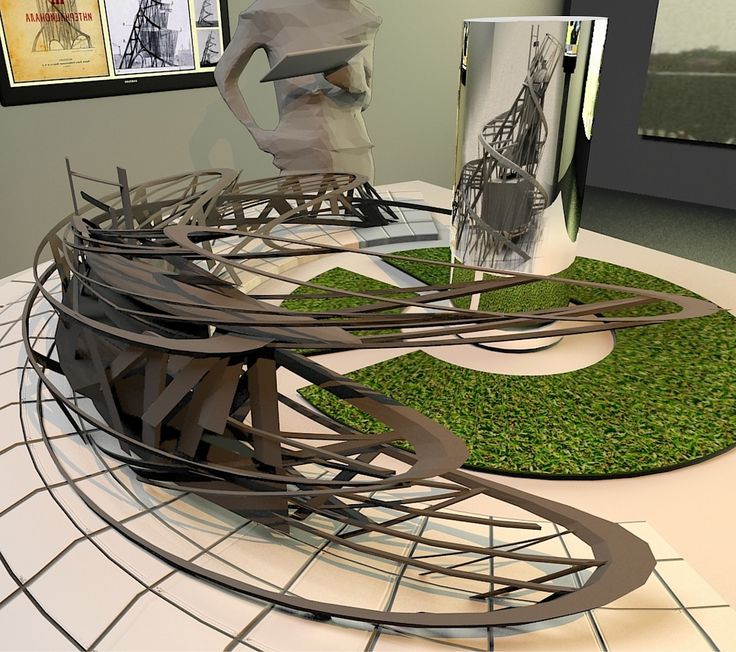
OpenSCAD is a free software with a ton of features and a unique way of creating models. This software takes a programming approach to 3D modeling, making it a unique addition to this list of 3d printing software tools. Instead of the traditional interactive modeling interface, users write code in a script file that describes the parameters of the 3D object. Once you’ve entered your code, you can view the shapes you’ve created by clicking a “compile” button.
Another great feature that OpenSCAD has is the ability to import 2D drawings and extrude them as 3-dimensional. It uses a part profile from drawings made in a standard sketching software and use the SXF file to do this. With its stronger focus on programming, OpenSCAD may appeal to some while alienating others. Regardless, it is still a powerful tool.
Wings3D
- Price: Free
- Solid modeling: No
- Intended for: Amateurs and advanced users
- What makes it special: Polygon modeling enables the creation of more organic shapes.
 Standard tools can be accessed through a right-click menu.
Standard tools can be accessed through a right-click menu.
Wings3D is another open-source polygon model tool. Despite being freeware, it comes with a wide range of mesh and selection tools. Tools like mirror make symmetrical modeling a breeze. Seeing as it is a program for beginners, it is very user-friendly and the learning curve is quite steady. Features like the customisable hotkeys and easy to use interface are indicative of its status as an ideal tool for starters.
Despite the ease of use, it has no shortage of useful features such as plane cut, intersect, inset, bend, sweep, circularize, and sheer, making it capable of some very impressive models. It also supports a very wide range of file formats for both import and export. Despite its simple and plain looks, it is definitely worth checking out if you’re just starting out.
3D Slash
- Price: Free web version; Premium license is $24/year and a Commercial license is $240/year
- Solid modeling: Yes
- Intended for: Beginners and amateurs
- What makes it special: Models are created through “slashing” 3D blocks away to shape them as desired.
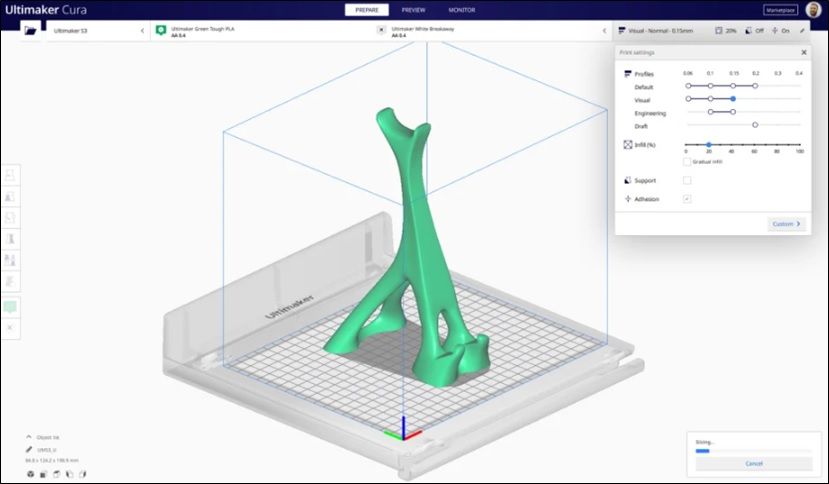
3D Slash focuses on providing design software with a uniquely fun user interface and enough advanced features to work with a high level of precision. You can also make logos and 3D text with this software. 3D Slash is free to use and ideal for beginners, however there a range of price packages that add in features for cooperative use or commercial use depending on the needs of the consumer. Additionally, the free versions has limitations in terms of functions, higher resolutions and colours you can apply. It’s intuitive interface with a block cutting style to create shapes makes it simple enough for anyone to use.
Even if you can’t find the creative spark to start a design from scratch, there are a multitude of files available for download that you can import and then cut apart into something new. Novel features like the cursor mode that makes interior designing much easier are great additions. Aside from its ability to run on standard mode, it an can also be used with VR head sets.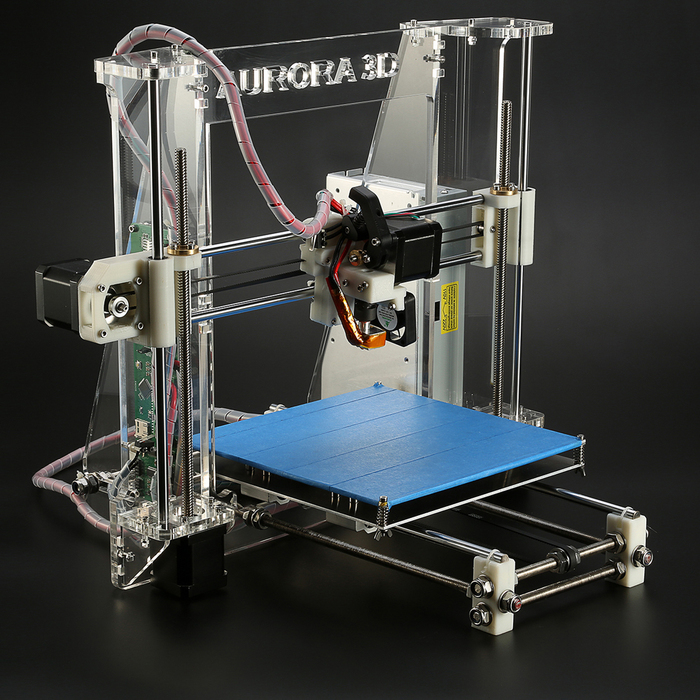 While the blockish style can be limiting in terms of range of shapes one can make and less pleasing to the eyes, it is nonetheless efficient and practical. There are few software that are as quick from concept to finish as 3D slash.
While the blockish style can be limiting in terms of range of shapes one can make and less pleasing to the eyes, it is nonetheless efficient and practical. There are few software that are as quick from concept to finish as 3D slash.
SketchUp
- Price: Free web version; Pro version is $299/year
- Solid modeling: No
- Intended for: Beginners to advanced users
- What makes it special: Intuitive and powerful, with a library of user-generated and manufacturer-produced models.
SketchUp is another good modeling software because it maintains that balance between usability and functionality, making it ideal for most skill levels. The software has an easy learning curve and there are advanced features available for professionals at an extra cost. It is especially good for designing interior and exterior architectural projects but also has tools for a diverse range of other purposes.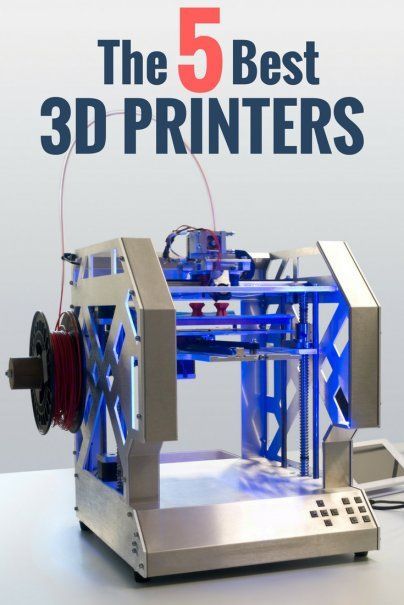
Anything complex can take quite a while, but simpler designs aren’t too time-consuming. A freeware version, SketchUp Make, and a paid version with additional functionality, SketchUp Pro, are also available.
Fusion 360
- Price: Free for personal use and startups, $595/year for commercial license
- Solid modeling: Yes
- Intended for: Amateurs to professionals
- What makes it special: Lots of features, such as tools modeling and sculpting, generative design, simulation, assemblies, collaboration, 3D printing, and CAM.
This is a unique addition to the list of 3d printing software tools. Fusion 360 is a cloud-based 3D CAD program that utilizes the power of the cloud to bring design teams together and collaborate on complex projects. Another advantage of the cloud platform is that Fusion stores the entire history of the model including the changes to it. Numerous design options are available, including freeform, solid, and mesh modeling.
Fusion 360 operates on a monthly payment subscription basis. The developers also regularly update the features, making it better as new instalments come along. It runs on multiple platforms and allows users to access their information wherever they want.
MoI 3D
- Price: $295
- Solid modeling: Yes
- Intended for: Amateurs to advanced users
- What makes it special: Can create smooth meshes from CAD models and is pen-tablet friendly.
Short for Moment of Inspiration, MoI offers a sleek UI and powerful range of CAD tools for users specializing in polygonal modeling. The program comes with advanced boolean functions that enable quick design of “hard surface” models. It is a user-friendly software that uses the NURBS modeling system.
While it isn’t free, it is cheaper than some of its competitors. It has a good amount of functions in it, yet avoids being too cluttered with pointless features. The system which uses curves and booleans makes workflow quicker as well.
The system which uses curves and booleans makes workflow quicker as well.
Rhino3D
- Price: $995
- Solid modeling: No
- Intended for: Advanced users and professionals
- What makes it special: Very powerful and full of features for modeling, analysis, rendering, 3D capture, CAM, and 3D printing.
The company behind this software markets it as the world’s most versatile 3D-modeler. The software is available for download in a variety of bundles on their website at various prices. The program uses a precise and mathematical model known as NURB, allowing you to manipulate points, curves, meshes, surfaces, solids, and more in all sorts of ways. Ultimately, given the range of design features available with Rhino3D, it’s hard to argue against its claims about unrivaled versatility in creating complex 3D models.
Users have commented on how the software can be very difficult to learn.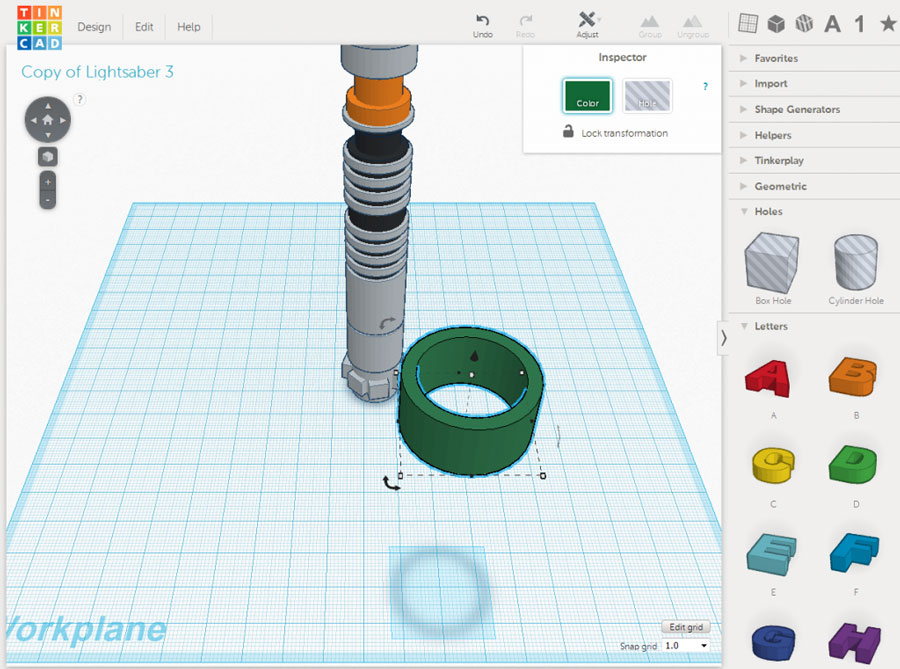 This is a natural trade-off between capabilities and user friendly many designers have to make when creating a detailed software. While it is not the most accurate software at capturing user intent, it is one of the best on the market.
This is a natural trade-off between capabilities and user friendly many designers have to make when creating a detailed software. While it is not the most accurate software at capturing user intent, it is one of the best on the market.
Modo
- Price: $599/year or $1,799 for Perpetual license
- Solid modeling: No
- Intended for: Amateurs to professionals
- What makes it special: Procedural modeling and artist-friendly tools for modeling, animation, texturing, and rendering.
Modo provides creative 3D polygon and subdivision surface modeling tools with a lot of flexibility, allowing you to create both freeform organic models and precision meshes using the same software. This is a professional-grade program with a range of features designed for advanced 3D designers, and the price reflects this.
Even though it isn’t the most user-friendly software, it hosts a large set of features while running smoothly.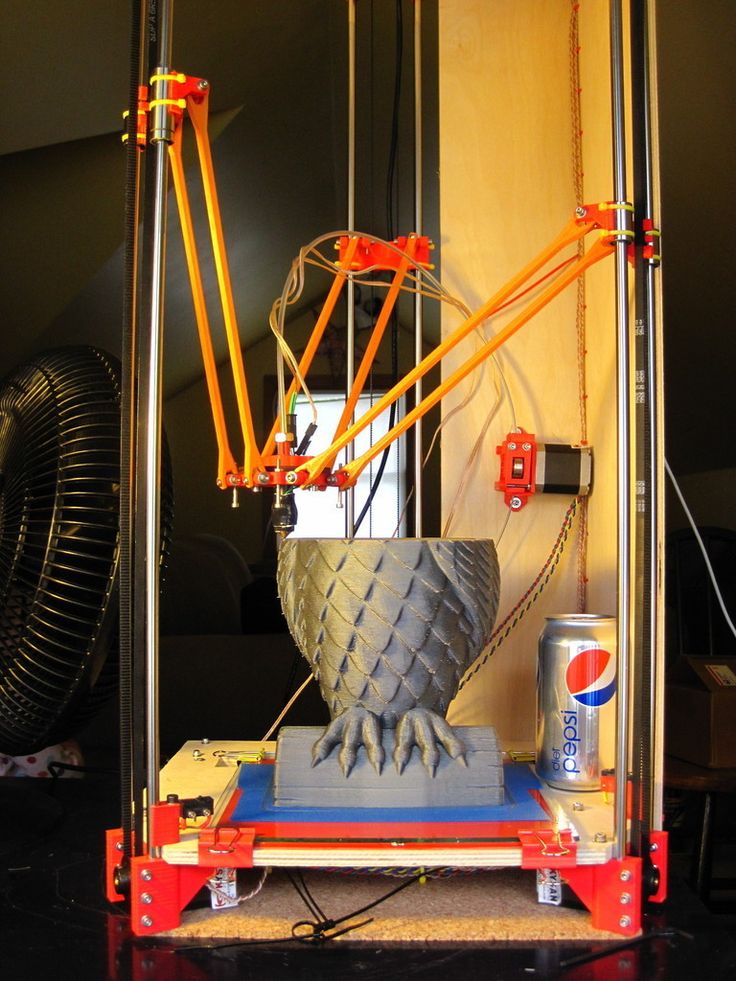 The speed of the software is particularly evident in terms of baking textures. It also works with partner software and extensions as additional customisations.
The speed of the software is particularly evident in terms of baking textures. It also works with partner software and extensions as additional customisations.
Cinema 4D
- Price: $720/year or $3,945 for Perpetual license
- Solid modeling: No
- Intended for: Amateurs to professionals
- What makes it special: An intuitive interface, parametric modeling, and procedural workflow.
This is an extremely powerful 3D modeling tool that lets you create complex 3D designs. Cinema 4D’s quite flat learning curve makes it approachable for beginners intimidated by software with advanced features. The program is regularly updated with free service packs, which help to optimize how it runs on various operating systems.
The user friendly options present the prints in very accessible ways. Scaling and shading options make modeling far easier. It’s sculpting tool is a great example of why this software is ideal for editing models and pre-existing files.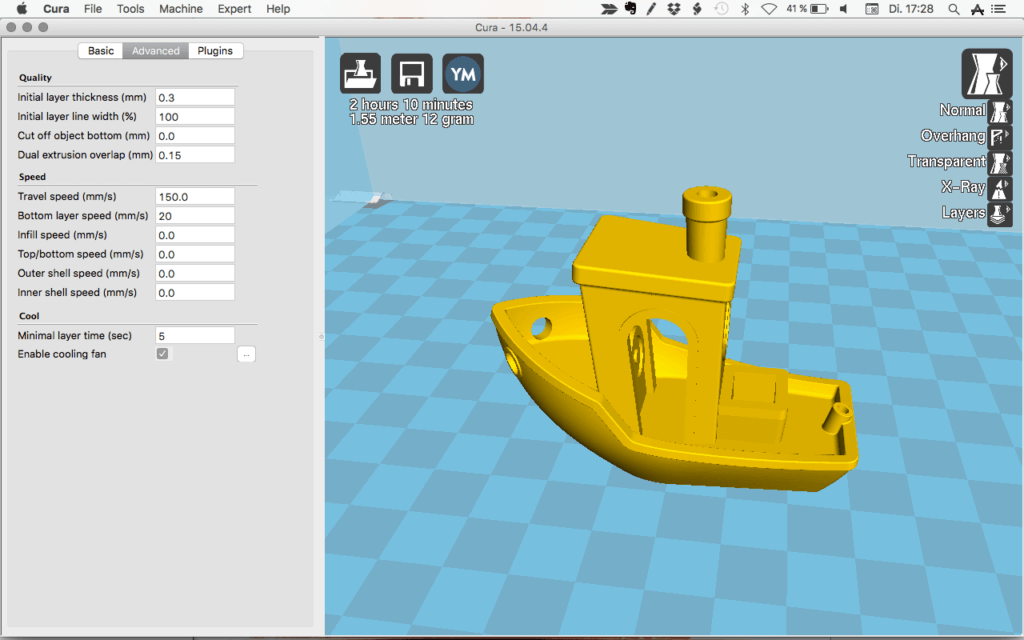
SolidWorks
- Price: $1,295/year or $3,995 for Perpetual license
- Solid modeling: Yes
- Intended for: Amateurs to professionals
- What makes it special: Powerful editing tree and tools for manufacturing, assemblies, simulation, cost estimates, CAM, and 3D printing.
Now we move on to SolidWorks. This is a CAD program often used by professional 3D designers. There are a plethora of advanced features included, such as design validation tools and reverse engineering. Solidworks comes in three distinct packages, depending on the exact features you need.
Solidworks tends towards the industrial side of things. It is practical and detailed. While most software, mimic curves through gently inclining flat structures, Solidworks uses a system of nurbs that create averages of the edges to produce fantastically detailed curvatures. It only does away with polygonal modeling, opting instead for dimensional sketching. As a result, resizing becomes far less of a hassle.
As a result, resizing becomes far less of a hassle.
Maya
- Price: $1,545/year
- Solid modeling: No
- Intended for: Advanced users and professionals
- What makes it special: Procedural effects and powerful world and character creation tools.
Primarily marketed at animation professionals, Maya is useful for many aspects of 3D modeling, especially in terms of mathematically smooth surfaces and shapes. Maya was originally slated as a 3D animation software, but is very useful in 3D printing as well. Thus, a lot of the interface options are more reminiscent of sculpting and animation.
Maya is more applicable to artistic printing requirements. It has a fast rendering engine and is best for highly detailed models with many intricacies. The downside is that it is very expensive (it is, after all, the same software used for high-budget movie CGI|). Nonetheless, it allows for realistic representations of reflection and colour on a software with smooth operation.
3DS Max
- Price: $1,545/year
- Solid modeling: No
- Intended for: Advanced users and professionals
- What makes it special: Advanced users and professionals
Another program that focuses on animation, 3DS Max offers some great 3D modeling features such as shading tools, parametric mesh modeling, and polygon modeling. This Windows only software is a favourite among video game developers, many TV commercial studios and architectural visualization studios.
Inventor
- Price: $1985/year
- Solid modeling: Yes
- Intended for: Advanced users and professionals
- What makes it special: Tailored specifically for product design and engineering applications and loaded with tools for simulation and manufacturing.
Inventor 3D CAD software offers professional-level 3D mechanical design.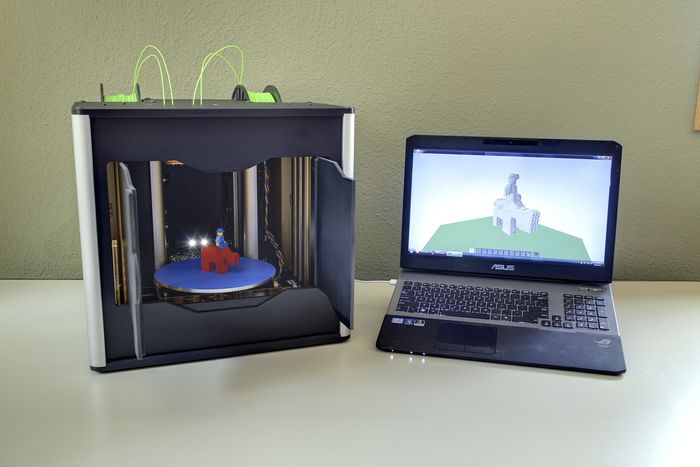 The program comes with freeform, direct, and parametric modeling choices. Furthermore, you also get automation and simulation tools.
The program comes with freeform, direct, and parametric modeling choices. Furthermore, you also get automation and simulation tools.
Developed by Autodesk, Inventor comes in different packages depending on level of proficiency (student, professional etc.). One of the great things about Inventor is how they improve the software with user feedback. New versions include improvements to visual data representation and the ability to easily reference 3rd party designs without the need to convert file formats.
Slicers & 3D Printer Hosts
The second section of this list of the best 3D printing software tools focuses on programs that help you to execute a 3D print. Slicers are the easiest way to go from a 3D model to a printed part because they take a CAD model, slice it into layers and turn the model into G-code. The slicer software also includes 3D printer settings like temperature, layer height, print speed, etc. to the G-code. The 3D printer can read this G-code and make the model layer by layer following the instructions set in the G-code.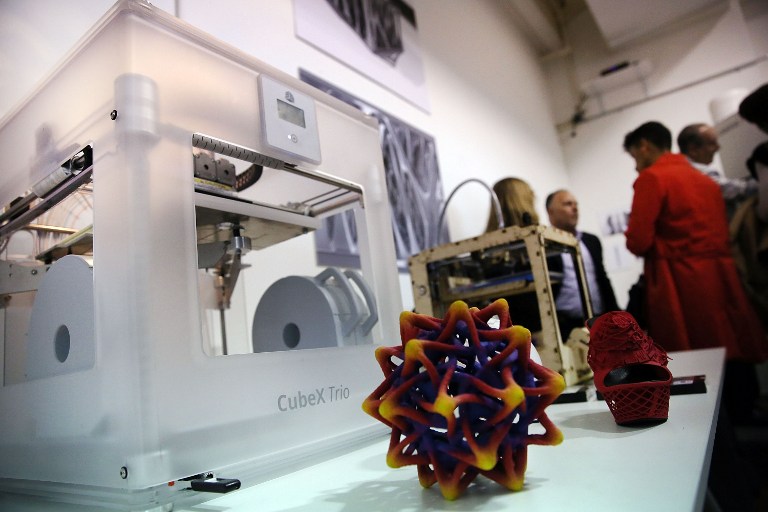
Ultimaker Cura
Despite its name, Cura can be used with almost any 3D printer because it is an open-source slicer. The program is ideal for beginners because it is intuitive and fast. Most of all, it’s easy to use. More advanced users can access a further 200 settings to refine their prints.
Simplify3D
Simplify3D is an extremely powerful premium slicing tool that helps you drastically improve the quality of 3D prints. Not only does Simplify3D slice your CAD into layers, it also corrects any problems with your models and allows you to preview the end result, helping to further identify any other issues. Advanced users will need to decide if the premium features are worth paying for compared to open-source slicers.
Slic3r
This open-source software includes real-time incremental slicing, 3D preview, and more. It is one of the most widely used 3D printing software tools. The incremental real-time slicing ensures that when you change a setting, the slicing doesn’t need to start from scratch.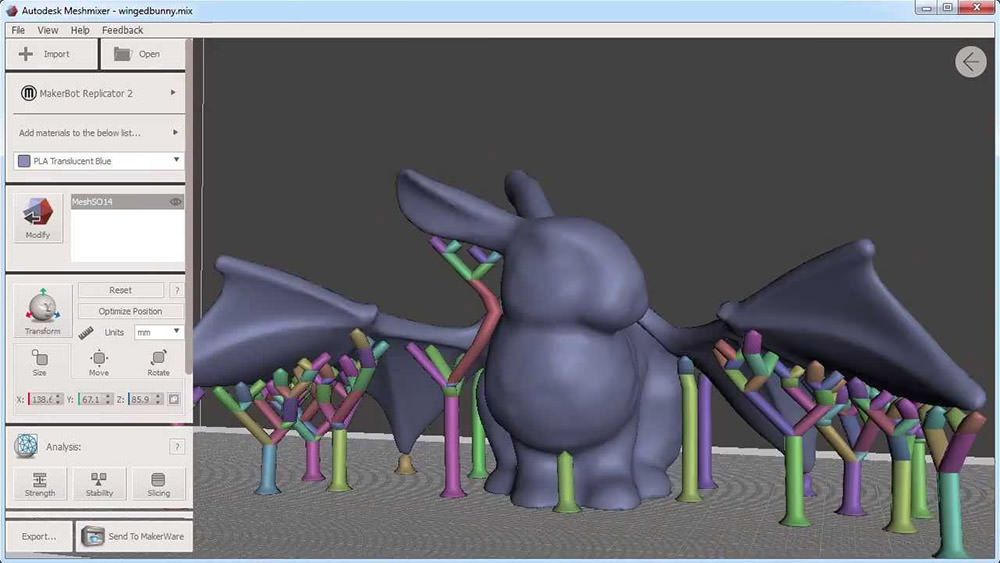 Only the G-code for affected parts is recalculated. The end result is a fast, flexible, and precise slicing program.
Only the G-code for affected parts is recalculated. The end result is a fast, flexible, and precise slicing program.
Repetier
This open-source slicer software supports three different slicing engines; Slic3r, CuraEngine, and Skeinforge. Repetier can also handle up to 16 extruders with different filament types and colors simultaneously, and you can visualize your end result before printing. There is a lot of customization and a lot of tinkering involved, making Repetier ideal for more advanced users. You also get remote access to your printers with Repetier host.
KISSlicer
This slicing software does its job well, although the user interface is somewhat basic. Still, if you just need a slicer that delivers great results, use KISSlicer. Note that the basic version is for single-head machines only. You’ll need a PRO version for multi-head machines.
ideaMaker
This free slicer is distributed by Raise3D and provides fast, simple slicing for most 3D printers. Team members can share print profiles and supports can be automatically or manually placed. The adaptive layer height tool allows the software to adjust layer height depending on the level of detail in the model, maximizing print quality while minimizing print time. Remote monitoring and control is also available.
Team members can share print profiles and supports can be automatically or manually placed. The adaptive layer height tool allows the software to adjust layer height depending on the level of detail in the model, maximizing print quality while minimizing print time. Remote monitoring and control is also available.
OctoPrint
A free open-source web-interface that allows for remote control and monitoring of 3D printers. It’s compatible with most 3D printers and allows users to watch their prints with an embedded webcam feed. Prints can be started, paused, and stopped remotely, and plugins are available to track print statistics and send push notifications on job progress.
3DPrinterOS
This nifty cloud 3D printer management software comes at a cost. The essential idea is the management of the entire 3D printing process with one platform. Users can edit and repair designs, slice STL files from the cloud, and even send files for printing from anywhere in the world. The software also features the capability to share CAD files.
The software also features the capability to share CAD files.
Best 3D printing software in 2022
3D Learning Hub
See all categories
Contents:
- Introduction
- What is 3D printing software?
- Slicers and 3D printer host
- Tools to edit and repair STL files
- 3D modeling software
Introduction
What is 3D printing software?
There is a lot of software applications to the 3D printing process. From designing your parts to slicing them into G-code and even controlling a desktop 3D printer while it fabricates your parts, you will inevitably have to choose some 3D programs along the way.
From designing your parts to slicing them into G-code and even controlling a desktop 3D printer while it fabricates your parts, you will inevitably have to choose some 3D programs along the way.
What is slicer software?
A 3D printing slicer is a program converting your 3D model into a language your 3D printer will understand to manufacture your object. The 3D slicer will digitally cut your 3D model into flat layers; these are the layers your 3D printer will then print one by one. This slicer software will define the model and instruct the 3D printer to print it. A 3D printing slicer usually prepares the model by generating G-code, the programming language the 3D printer will understand. Slicer software is only helpful if you 3D print with your own FDM desktop 3D printer or resin 3D printer. When using a 3D printing service such as Sculpteo, no 3D printing slicer is needed!What are 3D printer hosts?
Some slicer software can also be 3D printer hosts, directly controlling your 3D printing machine.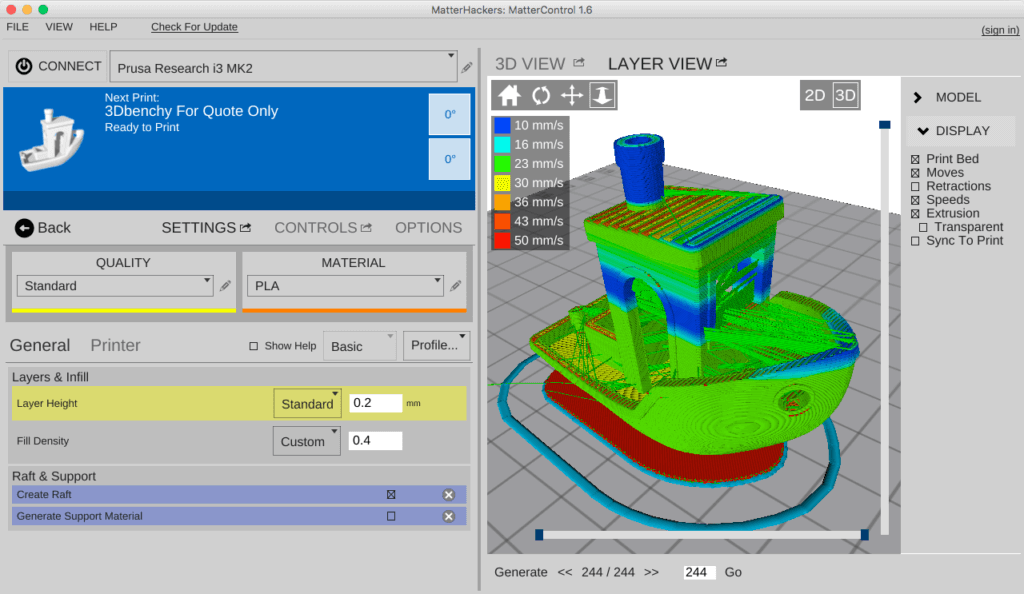 For this, you will need to connect your printer to your computer during the whole 3D printing process.
For this, you will need to connect your printer to your computer during the whole 3D printing process. What are STL editors and repair tools?
If you want to use additive manufacturing, you need one essential thing: a 3D file and, more precisely, an STL file. You can either design one yourself or find one online. But the files you find might not always correspond precisely to your needs. It might lack some features, have too many elements in it that you don’t need, or even be damaged. Thus, you will need to use an STL editor to fit your needs perfectly. You can use CAD software (Computer-Aided Design) or a mesh editing tool. They are made for modeling and objects represented by a 2D surface.What is 3D modeling software?
3D modeling software programs are designed to build 3D models of objects. Creating a 3D model is a mathematical representation of a three-dimensional object or shape. 3D models are used for various mediums, including video games, architecture, automotive, engineering, healthcare, etc.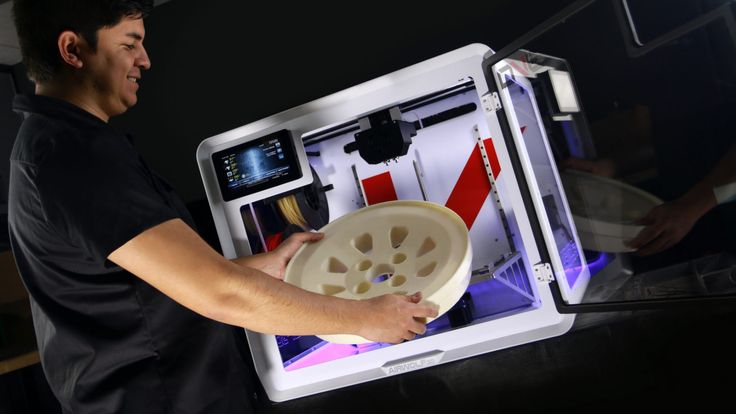 If you want to 3D print an object, you need to design it on a 3D modeling software – or buy an already-made 3D model.
If you want to 3D print an object, you need to design it on a 3D modeling software – or buy an already-made 3D model.Slicers and 3D printer host
- Ultimaker Cura
Cura is an open-source software tool developed by Ultimaker. A popular 3D printing slicer and new users can easily use the software with a quick learning curve. It is a fast and intuitive program, but advanced users can access another 200 settings when needing more precise control over print settings by switching from “Basic” mode to “Advanced” or “Expert.”
You can also use Cura as a 3D printer host software to control your machine, but the 3D printer needs to be connected to a PC during the whole 3D printing process. With Ultimaker Cura, users can monitor all the 3D printing jobs from a single user interface!
Price: Free
System: Windows, macOS, Linux
- Simplify3D
Simplify3D is a premium slicing tool. If you are looking for a slicer tool to improve the quality of your 3D prints, then this might be the right choice for you. Indeed, this tool is not only about slicing your model; it’s also correcting issues and allowing you to preview your 3D objects, preventing any other problems you might have.
If you are looking for a slicer tool to improve the quality of your 3D prints, then this might be the right choice for you. Indeed, this tool is not only about slicing your model; it’s also correcting issues and allowing you to preview your 3D objects, preventing any other problems you might have.
Simplify3D is compatible with most 3D printers and quickly switches between multiple machines.
Price: $149
System: Windows, macOS, Linux
- Slic3r
Slic3r is an open-source software allowing you to slice, preview, and more! Another widely used 3D printing tool. As a good slicing tool, Slic3r cuts your 3D design into horizontal layers, generates toolpaths to fill them, and calculates the amount of material needed to 3D print the object.
Slic3r is a non-profit community project which allows people to experiment with several advanced new features that have become quite common, such as multiple extruders, brim, micro layering, bridge detection, and so on!
Price: Free
System: Windows, macOS, Linux
- KISSlicer
KISSlicer is an easy-to-use and fast cross-platform app that efficiently slices STL files into printer-ready G-code files.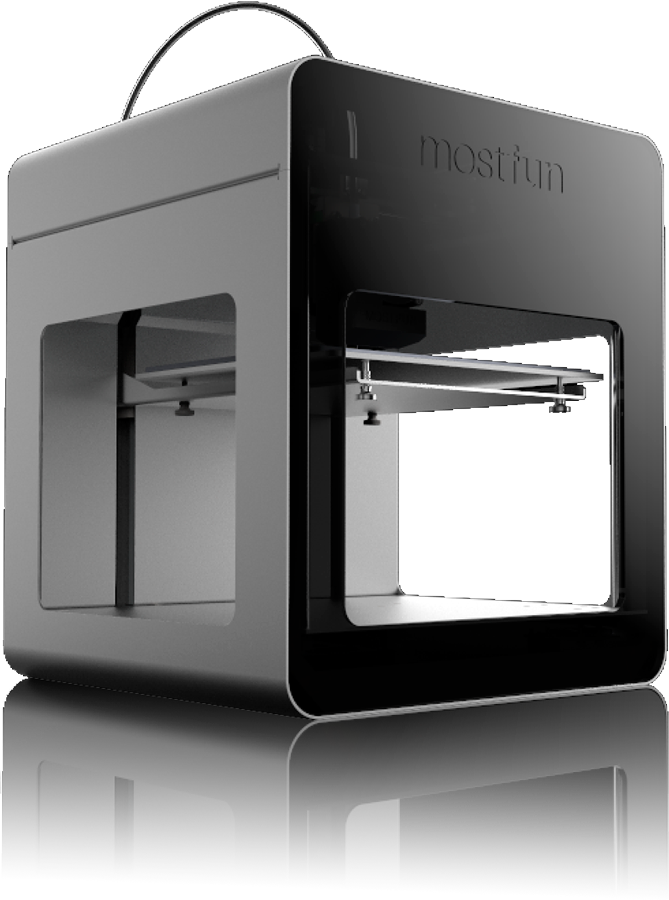 The user interface is basic, but the software will deliver excellent results if you don’t need advanced setting options or customization.
The user interface is basic, but the software will deliver excellent results if you don’t need advanced setting options or customization.
The free version is only for single-head machines; if you want to use multi-head devices, you must choose the PRO version.
Price: Free for the basic version
System: Windows, Mac
- Repetier
This open-source slicer software will allow you to place, scale and rotate your object as well as slice it. You will also get the opportunity to preview your 3D model before 3D printing. Repetier supports three different slicing engines, Slic3r, CuraEngine, and Skeinforge, and handles 16 extruders. This 3D printing tool offers quite a lot of customization, ideal for more experienced users.
Price: Free, but you can donate to support the project
System: Windows, Linux, Mac
- PrusaSlicer
PrusaSlicer has been developed by the creators of the Original Prusa 3D printer, Prusa Research. They used the open-source program Slic3r to create their slicing tool.
They used the open-source program Slic3r to create their slicing tool.
This program includes many exciting features, such as customizable support structures, multi-material support, or even smooth variable layer height functions. PrusaSlicer 3D software can be used with both FDM and resin printers, and its various modes will allow you to adapt the settings to your skill level.
Price: Free
System: Windows, macOS, Linux
- OctoPrint
OctoPrint is a free, open-source software accessible from your web browser. It is a real web-based 3D printer host that allows for the control and monitoring of 3D printers. Moreover, OctoPrint is compatible with most 3D printers and offers the possibility to start, pause and stop the 3D printing process remotely.
This tool accepts G-code from any 3D slicer software but can also be used as a slicer for your 3D files, meaning OctoPrint can become your all-in-one print preparation package.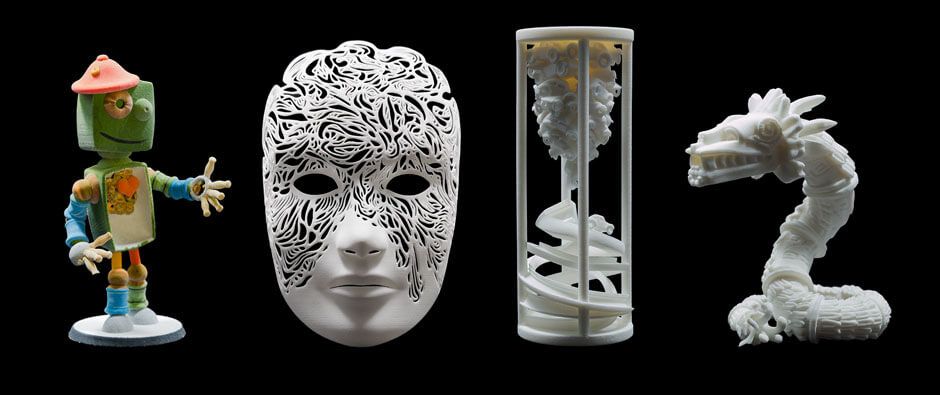
Price: Free
System: Web browser
- MatterControl 2.0
MatterControl 2.0 is developed by MatterHackers; this all-in-one program is a 3D printer host, slicer, and CAD software. This software will tackle your entire 3D printing process, from design to actual manufacturing.
This software package targets beginners and advanced users. Many tutorials are available on their website for new users, while experienced ones will have the pleasure to discover the possibilities of advanced settings for customized support generation.
Price: Free
System: Windows, macOS, Linux
- ISL
ISL is both a slicer and a 3D modeling tool. The developers’ goal was to make a powerful and accessible solution, particularly adapted to beginners. You can find a wide range of slicing settings and pre-configured options if you are not familiar with these programs.
Price: Free
System: Windows, Linux
Tools to edit and repair STL files
- Meshmixer
MeshMixer is a free mesh editing software.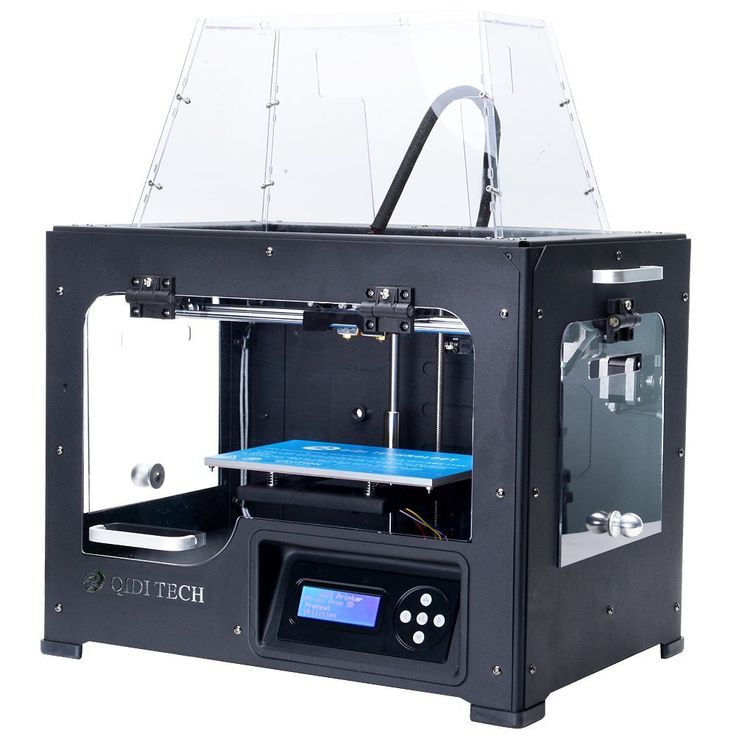 You can download it directly from Autodesk’s website. It’s straightforward to use if you want to edit STL files, especially if you wish to resize your 3D object or change some aspects. It considers all the different issues that you may face with your file. These software tools will allow you to get a repaired file ready for additive manufacturing.
You can download it directly from Autodesk’s website. It’s straightforward to use if you want to edit STL files, especially if you wish to resize your 3D object or change some aspects. It considers all the different issues that you may face with your file. These software tools will allow you to get a repaired file ready for additive manufacturing.
Moreover, it also has a built-in slicer tool. Thus, you can directly send your file from MeshMixer to a 3D printer.
Price: Free
System: Windows
- MeshLab
MeshLab is an entirely free and open-source program to edit your STL files. Professionals primarily use it since they appreciate its multiple mesh and point cloud processing functions. They also enjoy the possibilities it offers to manage massive files.
It has many processing tools like mesh analysis, cleaning of errors, remeshing, surface reconstruction, automatic smoothing, and visual inspection. Thus, it’s extremely powerful to edit your STL files.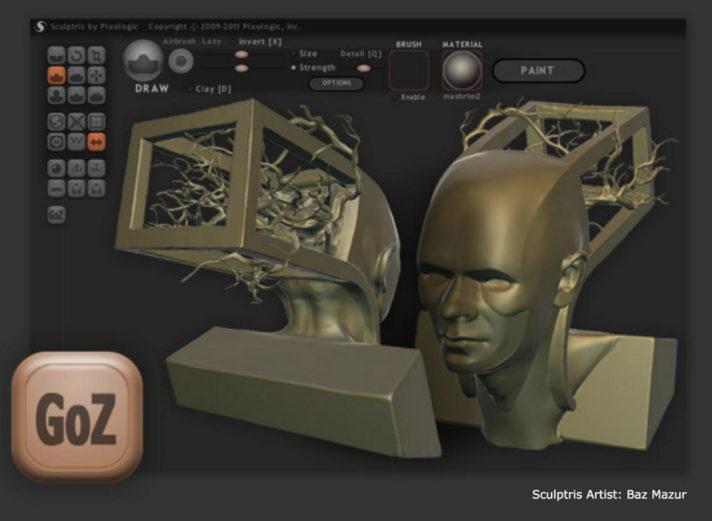 You can’t create an STL file from scratch, but you can create new models by merging some existing ones.
You can’t create an STL file from scratch, but you can create new models by merging some existing ones.
Price: Free
System: Windows, macOS, Linux
- FreeCAD
FreeCAD is a free and open-source CAD software. It uses parametric modeling and can be used by many different users, from beginners to professional 3D designers. Since it’s pretty easy to use, you don’t need to be an experienced CAD designer to use it. Architects and engineers mostly use it because its features were built for mechanical engineers.
Since it was designed for mechanical use and not for modeling, you can’t sculpt a model with it without difficulties. But it will be great to construct mechanical objects or fix your STL files.
Price: Free
System: Windows, macOS, Linux
3D modeling software
- Tinkercad
TinkerCAD is a browser-based program made by Autodesk, meaning you don’t have to download it; you can access it quite easily and start your 3D design and 3D modeling project. TinkerCAD is an excellent introduction to 3D software, perfect for beginners, and this program is adapted for educational purposes. This program will allow you to give life to your ideas without any previous 3D modeling experience.
TinkerCAD is an excellent introduction to 3D software, perfect for beginners, and this program is adapted for educational purposes. This program will allow you to give life to your ideas without any previous 3D modeling experience.
This app works by placing blocks one by one to create the object you want. It has a user-friendly interface making it easy to use the different 3D tools and create your 3D project. Keep in mind that you might need to switch to a more powerful 3D modeling tool for more complex and intricate designs.
Price: Free
System: Web browser
- 3D Builder
This 3D modeling application is integrated into Windows. Thanks to a simplified interface, 3D Builder can be used by anyone. A library is available, where you can choose among already made projects. This program is straightforward and doesn’t offer many options but still allows you to work on STL, OBJ, or 3MF files.
However, if you are looking for a program to initiate 3D modeling and 3D printing, you have to try it out.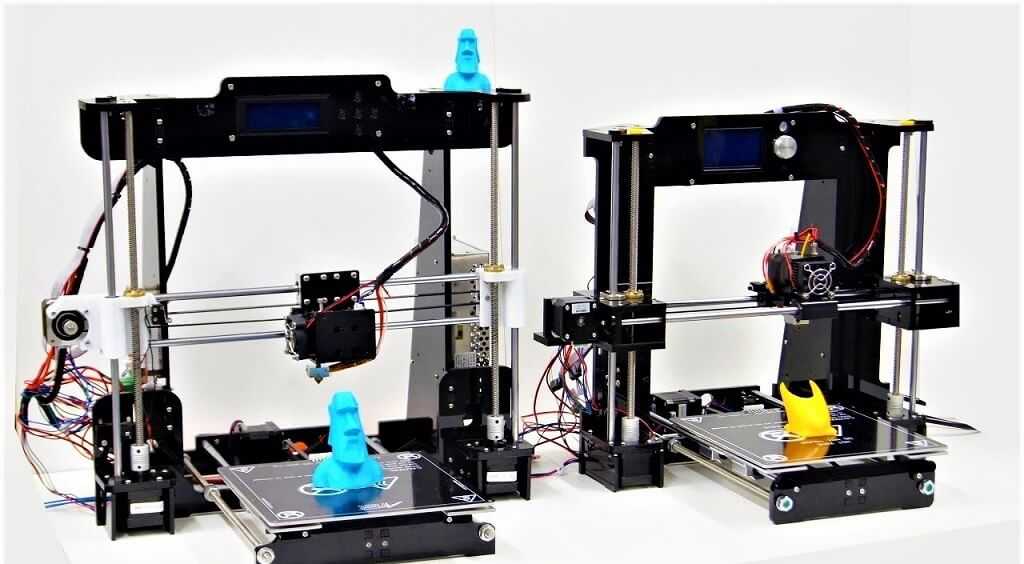
Price: Free
System: Windows
- SketchUp Free
With many features and several advanced tools, Sketchup is a well-known professional-grade software. The software is beneficial for professionals who need to create 3D models easily to showcase them to their customers. This 3D software is primarily used for architecture, interior design, or engineering projects but can be used for 3D printing.
It offers an open-source library with an extensive collection of 3D models you can use and reuse for your projects. This 3D modeling program is free for personal use or students! Keep in mind that the accessible version of Sketchup is a web platform. This free version can already allow you to develop interesting 3D printing projects and is adapted to both beginners and advanced users.
Price: Free, pro version is $299/year
System: Web browser
- Fusion 360
Fusion 360 is cloud-based software developed by Autodesk, combining parametric, surface, freeform direct, and mesh modeling features.
This 3D software is gaining popularity among professionals and hobbyists. Fusion 360 by Autodesk combines Computer-Aided Design (CAD), Computer-Aided Manufacturing (CAM), and Computer-Aided Engineering (CAE) software. It has a more modern take on design and will give you numerous design, simulation, and production tools. Fusion 360 will be excellent for 3D printing engineering projects, mechanical parts, and product design. It is also important to mention that Fusion 360 is cloud-based, making it much easier to work in teams.
Price: Yearly 495$
System: Windows, macOS, Linux
- Blender
Blender is a well-known computer-aided design software, and it is a powerful mesh-based direct modeling software and not a parametric one. Professionals even use Blender to develop video games or animation. It is pretty similar to software such as Mudbox or ZBrush, and it is not suitable for beginners.
This program is fantastic for artistic use, with excellent software tools such as sculpting, rendering, and fast modeling.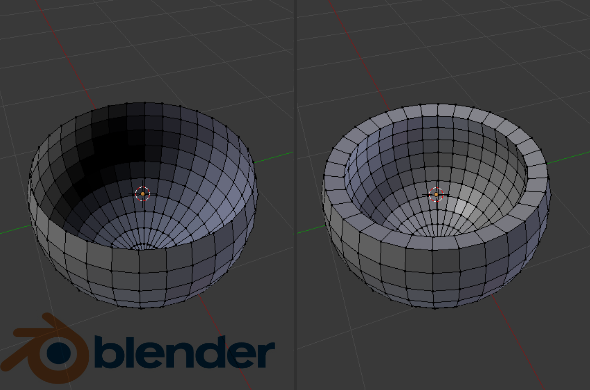 But it is also a perfect software if you need to create 3D printable 3D models, as it also includes CAD features to repair your meshes. It can avoid bad surprises once parts come out of 3D printers.
But it is also a perfect software if you need to create 3D printable 3D models, as it also includes CAD features to repair your meshes. It can avoid bad surprises once parts come out of 3D printers.
Price: Free
System: Windows, macOS, Linux
Now that you have this selection of 3D printing software, you are ready for your 3D printing journey. If you don’t want to invest in your 3D printer and need professional quality, try out Sculpteo’s online 3D printing service! Upload your 3D file right now, and you will get an instant quote for your project.
Any questions about the 3D printing process of your parts? Contact us, our team of 3D printing experts, we’ll help you with your project.
Related Topics
- Return to Top
Get the latest 3D printing news delivered right to your inbox
Subscribe to our newsletter to hear about the latest 3D printing technologies, applications, materials, and software.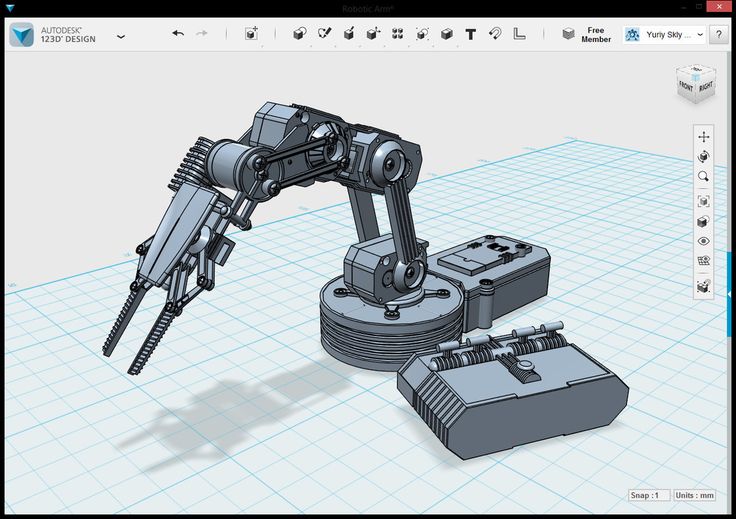
Best Free 3D Modeling Software (for Beginners) Ranking for Spring 2021 / Sudo Null IT News Users can export their models and either 3D print them or post them online for others to download for free or for money.
These programs range from easy-to-use for beginners to professional programs that can take years to learn. That's why we've created our list of the best free 3D modeling software to help you make your choice.
Some free online programs run entirely in the browser, others need to be downloaded. But they are all, at least in the short term, free.
List of best free programs for 3D modeling in 2021:
-
TinkerCAD-Best program for beginners
-
3D Slash-simple program for beginners
-
Freecad-Free source code
-
A well-developed set of tools for creating professional 3D models.
-
The presence of new tools that allow you to take a completely new approach to creating 3D designs.
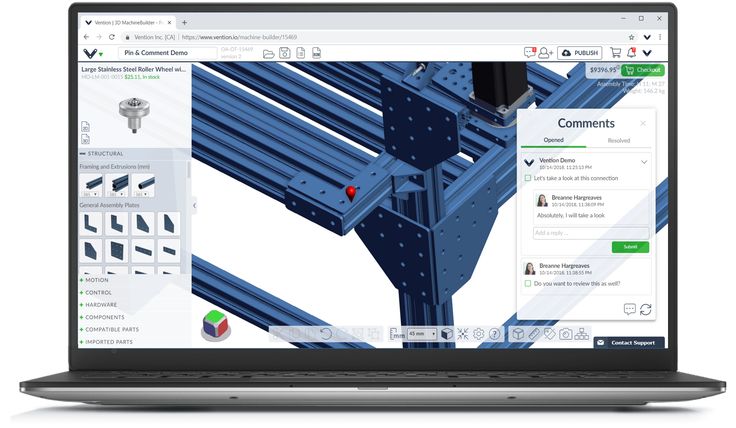
- Lots of tutorials, extensions and ready-to-use libraries;
- demand for specialists in the market.

- very expensive program, but you can get a free student license for 3 years for studying;
- mastering takes a lot of time.
- Modeling possibilities are almost unlimited;
- You can create complex realistic animations and special effects.
- very difficult to study;
- an expensive license, although there is a free student license for 3 years.
- have Russian interface;
- powerful renderer;
- realistic lighting;
- easy to learn for the beginner;
- expandable with additional modules.
- expensive license;
- It's hard to model faces - ZBrush has no competition in this.
- the program is free;
- small;
- compatibility with different systems;
- abundance of teaching materials;
- ease of study.
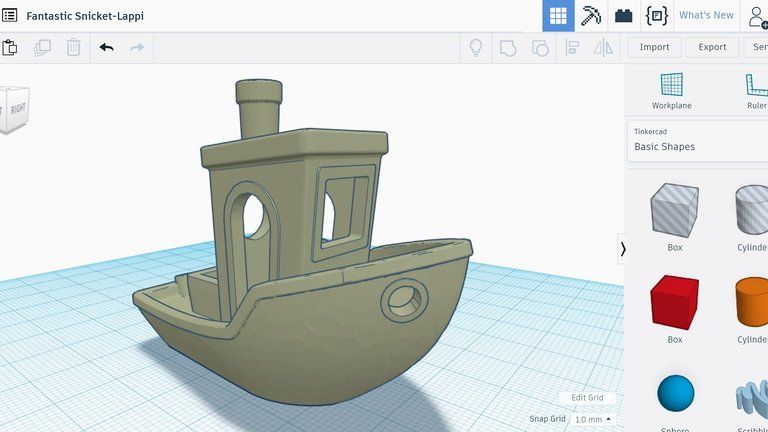
- abundance of training materials;
- ease of use;
- specialization in the technical direction;
- Ability to work in 2D and 3D.
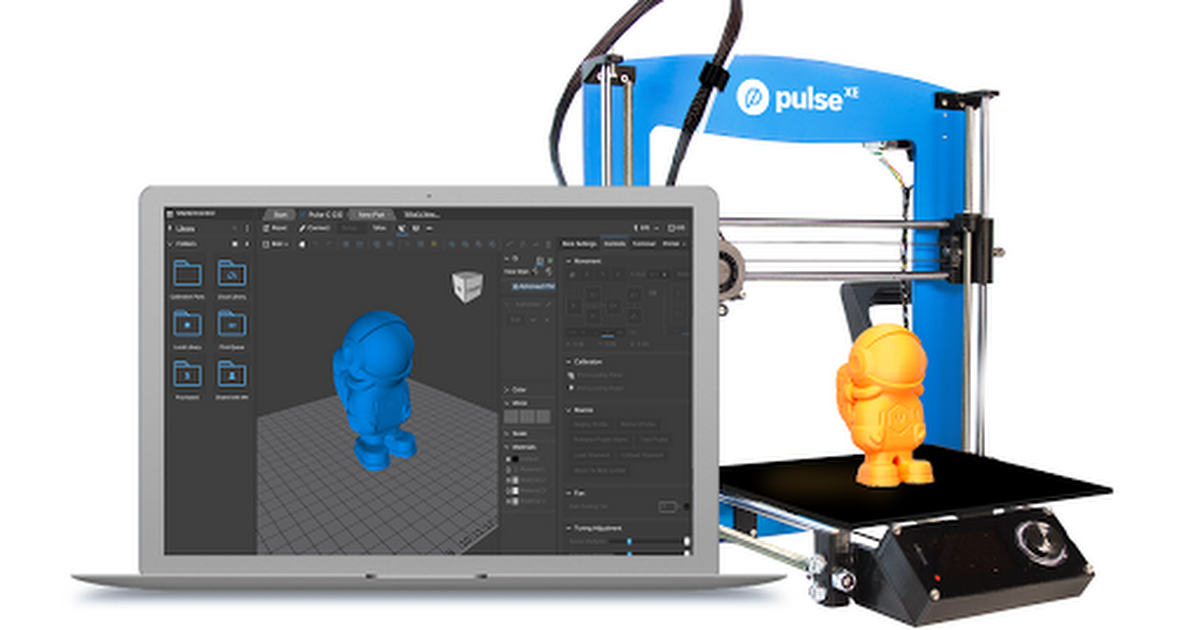
- ease of use;
- free for personal use;
- you can quickly create the interior of your apartment and move the furniture.
- file incompatibility in earlier versions;
- may be unstable.

Learn more
1. TinkerCAD is the best free program for beginners
Country of origin - USA. Available to work in the browser.
This is one of the many 3D CAD programs from Autodesk giant TinkerCAD. The tool looks deceptively primitive, easy to use, but again and again it makes it to the top of the best free programs.
TinkerCAD allows you to create detailed 3D models using basic shapes by joining them together. The learning process is much easier than in other programs. It is perfect for beginners and kids to teach kids how to 3D print. It is most often used in schools and classrooms around the world. You can get started in minutes in your browser without downloading. What's more, you can download the TinkerCAD app and play with the models on your smartphone or tablet!
Autodesk makes a wide variety of software for various industries. TinkerCAD is perfect for beginners in 3D design to make something cool. You can export the model to STL and any other format and send it to a 3D printer. Once you gain the necessary experience, you may need a more sophisticated program such as AutoCAD. But at the same time, TinkerCAD remains a great program to start your career as a 3D designer.
Once you gain the necessary experience, you may need a more sophisticated program such as AutoCAD. But at the same time, TinkerCAD remains a great program to start your career as a 3D designer.
2. 3D Slash is a simple free program for beginners
Basic version is free, premium version costs $2 per month.
Ideal for beginners. 3D Slash is not like a regular program, more like a friendly, interactive 3D world where you can create whatever you want. The development team clearly thought out how to make the user interface as natural as possible, understandable to non-designers, without a complex learning process. The functionality is intuitive and convenient.
At the same time, you are not limited to basic forms. You can create impressive and more complex objects. The standard version is free, the premium version comes with a small monthly fee. School and professional plans are also available.
3. FreeCAD is free and open source
FreeCAD was released back in 2002, and although it is still in beta testing, its development is well advanced.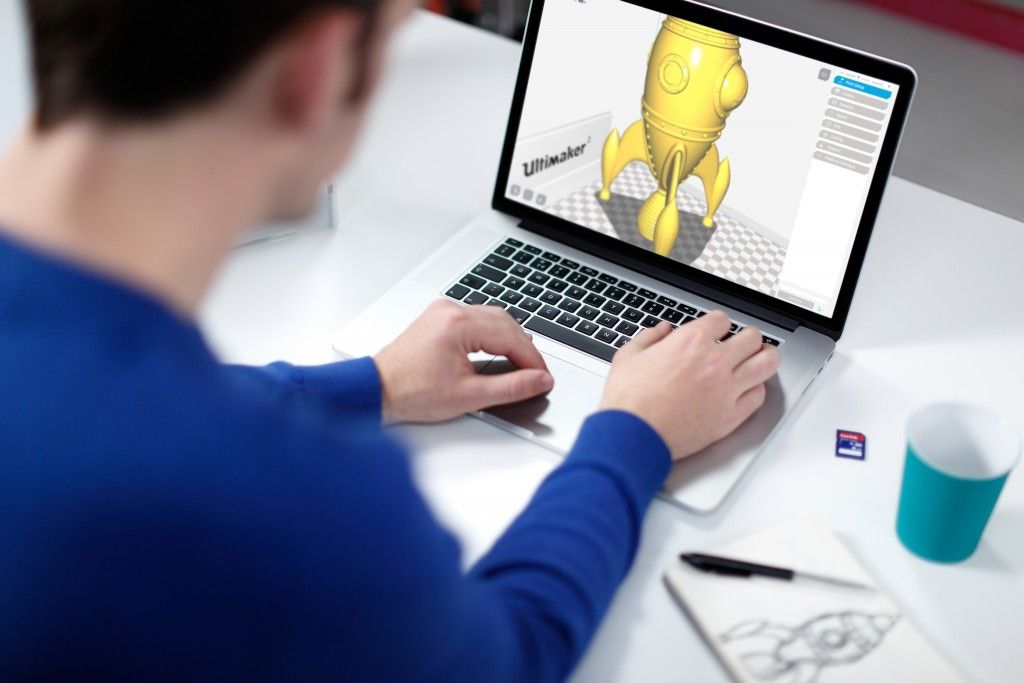 It is designed to make the process of creating 3D versions of real objects as efficient and simple as possible.
It is designed to make the process of creating 3D versions of real objects as efficient and simple as possible.
A very useful feature is the ability to start with a static 2D sketch, from which you can then build the final 3D model. FreeCAD works well on Windows and Mac, you can easily export the model as STL, OBJ or even DXF files, for example for CNC.
Although FreeCAD was developed primarily for machine tools, it can also be used for 3D printing. What's more, FreeCAD is open source, so you can work with Python.
FreeCAD is ideal for users with some design experience, as some of the tools can be difficult for beginners. But overall it is a very powerful free 3D modeling tool.
4. SketchUp
Basic version is free, Pro version costs $299 per year. The country of the developer is the USA.
A veteran of the 3D modeling software industry, created in 2000 by Lastsoftware. In 2006, Google bought it to implement this versatile and powerful tool in its services. It has since been sold to Trimble Inc., who have offered a free version. SketchUp is a great choice for beginner designers. It, like TinkerCAD, is easier to learn than most other 3D programs. Contains almost all the tools you might need.
It has since been sold to Trimble Inc., who have offered a free version. SketchUp is a great choice for beginner designers. It, like TinkerCAD, is easier to learn than most other 3D programs. Contains almost all the tools you might need.
Though mostly used by architects, SketchUp is gaining popularity in 3D printing. The tools are surprisingly well suited to 3D CAD file creators. You can download the SketchUp STL extension to create files in STL.
SketchUp has a simple interface that is not overloaded with information. You can easily figure it out in a few hours and create a very realistic 3D model on the first day.
5. Blender - Extended Freeware
The country of origin is the Netherlands.
Possibly the most popular 3D design software. Blender has a huge active community that shares its STL files and 3D models as well as information on the web. A quick Google and YouTube search will turn up thousands of links where users showcase their 3D designs and share their Blender 3D experience. Such popularity is primarily due to the fact that the program is 100% free and open source. You can create almost anything in it. The choice of tools is huge.
Such popularity is primarily due to the fact that the program is 100% free and open source. You can create almost anything in it. The choice of tools is huge.
The learning process is more complex than in previous programs. However, thanks to its toolset, Blender is a versatile 3D modeling program. It is used in a variety of applications ranging from VFX for movies, video games, 3D model design to 3D printing. In addition, Blender comes with an integrated game engine as well as detailed modeling tools and video editing capabilities. This incredible free software is ideal for game developers and experienced 3D modelers.
6. MeshMixer
Country of origin - USA.
Meshmixer is a unique program that does not fit into any particular category. Another development from Autodesk, Meshmixer sets itself apart from the competition in that it allows you to edit existing models using a variety of tools, including animation, buckle/fill, repair. Meshmixer is well suited for design modification and quality assurance.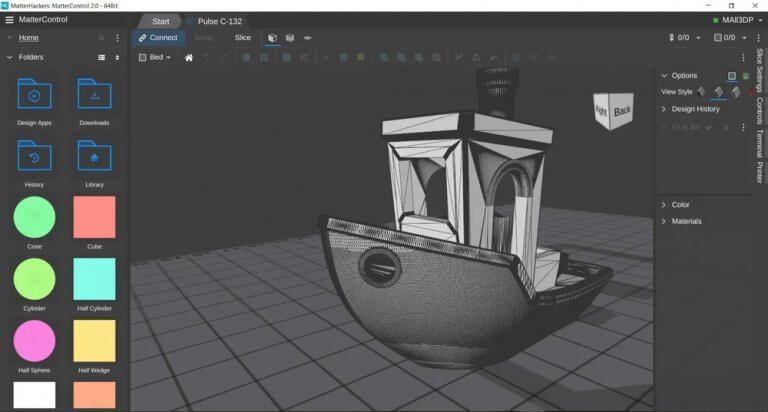 Useful for both beginners and experts. Allows you to improve and prepare your models for 3D printing.
Useful for both beginners and experts. Allows you to improve and prepare your models for 3D printing.
Another important advantage of the program is the possibility of using it in topological optimization. With simple tools, parts can be made lighter and more economically. This is especially useful for subsequent 3D printing in industries such as aerospace and automotive, where the weight of the model is very important.
All in all, Meshmixer is a versatile option for those who need to improve their 3D model. Beginners can change their models, experts can optimize industrial designs.
7. Fusion 360
The program is free for personal use for a year, the Pro version costs about $500 per year.
Country of origin - USA.
Another Autodesk development for schools and academic institutions. It is undoubtedly a tool for experts, but easy enough to use for an educated beginner. Fusion 360 is a sharing program that allows you to share STL files via the cloud for collaborative editing and model optimization.
Powerful tools for virtually any industrial 3D design. It has built-in functions for estimating the load that the components of a 3D model will face. This allows designers to find potential weaknesses before printing. Once created, you can easily export the model to an STL file or any other format. The program has recently become free for students, startups, and more. If you have some experience or want to improve your 3D design skills, this 3D software is perfect.
8. Vectary
Free program with premium features for $12 per month.
Vectary launched in 2014 and calls itself the most accessible 3D and AR design platform. This is a free web-based 3D modeling program. Vectary offers templates with pre-rendered and lit screens that you can place your 3D models in front of for product photography and other artistic purposes. A simple work interface with the necessary set of tools makes working with lighting and modeling easy. You can easily export your finished design or scene as an AR model.
The free package includes access to Vectary Studio for creating and designing models, as well as the ability to export your creations to OBJ or STL formats. For other formats, you will need an update. You can create up to 25 projects for free, as well as access a library of 3D assets, materials, and Vectary icons. A paid upgrade gives you access to AR preview tools, as well as project sharing features and teams for better and faster feedback between multiple people.
9. SelfCAD
Free education software. For the rest, it costs $4.99 per month.
Country of origin - USA.
SelfCAD focuses on being the best browser-based, no-download free 3D modeling software for students around the world. It is popular in American schools teaching 3D design to students. Simple and easy to use, requiring a short training period, SelfCAD has all the necessary tools for creating models. It also has slicing tools to prepare STL or G-code files for 3D printing.
SelfCAD is a simple 3D design program with a very clear interface, suitable for beginners.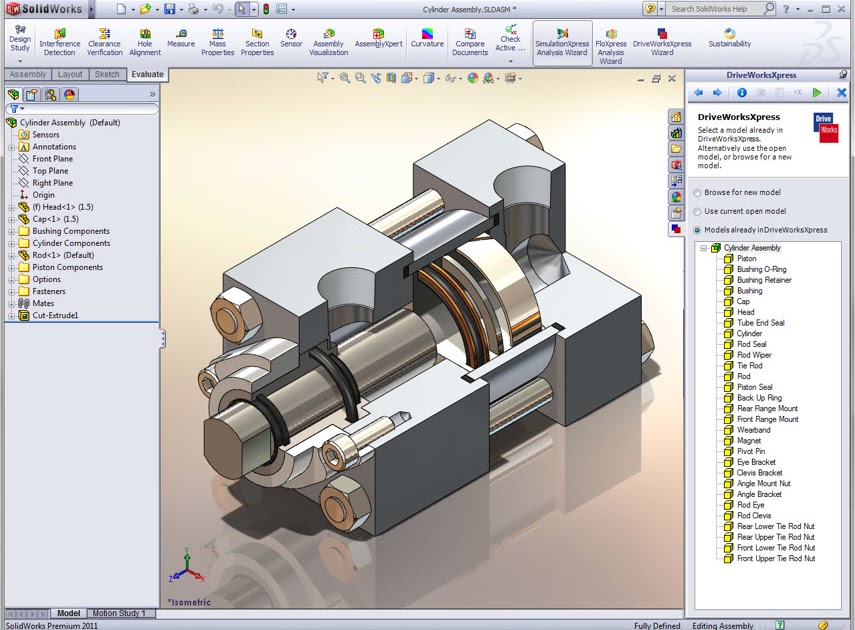
10. BlocksCAD
The program is provided free of charge. There are paid educational versions for schools.
Country of origin - USA.
BlocksCAD is educationally oriented and was created for STEM students in grades 3-8. It is a cloud-based free 3D modeling software that promotes learning about mathematics, computational thinking, coding concepts, and designing models for 3D printing.
The free gallery has a wide selection of projects that can be used in personal and classroom work, ranging from snowmen, jewelry rings, fish, and even the infamous cafeteria. Works great with OpenSCAD, designed to be simple, fun and easy for kids to work with. 3D models can be created using colorful, easy-to-manage blocks and exported either as STL files or as files to be opened and edited in OpenSCAD. For beginners, BlocksCAD offers extensive tutorials on the basics of 3D modeling and how to use 3D software.
11. OpenSCAD
OpenSCAD is a free downloadable program. It looks intimidating, because it “envelops” with codes and scripts. This is a powerful tool. But keep in mind that it is for those who are used to coding. The program was created back in 2010 by Marius Kintel and Clifford Wolf. New updates and patches are released regularly. OpenSCAD is loved by 3D designers who prefer a scripted rather than an artistic design method. It is also worth noting that a 3D part in OpenSCAD can be created using only the mouse, but this is not the only feature of the program.
It looks intimidating, because it “envelops” with codes and scripts. This is a powerful tool. But keep in mind that it is for those who are used to coding. The program was created back in 2010 by Marius Kintel and Clifford Wolf. New updates and patches are released regularly. OpenSCAD is loved by 3D designers who prefer a scripted rather than an artistic design method. It is also worth noting that a 3D part in OpenSCAD can be created using only the mouse, but this is not the only feature of the program.
Overall, we are impressed with OpenSCAD: it offers something new and free of charge. However, at least intermediate knowledge of scripting languages is required. Otherwise, it is better to use one of the other options from our list.
12. Wings 3D
Wings 3D is a completely open and free 3D modeling software that has been actively developed and improved since 2001. The program is not as modern and easy to use as Vectary or TinkerCAD, but works very well with characters, desktop models and other 3D modeling projects. Pretty easy to work with model customization features like sculpting, joining, cutting, bending - simple even for beginners.
Pretty easy to work with model customization features like sculpting, joining, cutting, bending - simple even for beginners.
Each menu item is context-sensitive, so when you right-click, different options appear depending on what you might need. This advanced tool saves time and makes it a great 3D modeling tool for beginners and experts alike.
Translated from the 3DSourced website
Rating of the best 3D modeling software
Today, 3D graphics can be found literally at every turn - in films, cartoons, games, on smartphone screens, on advertising banners and in many other places. Even a photograph that you enjoy looking at may just be a realistic graphic. Yes, 3D modeling programs have reached such perfection that the effects they create are almost impossible to distinguish from reality.
The models that are created in them are used not only in games, but also in films, and they cannot be distinguished from real ones. And photorealistic images are widely used, for example, by designers. Volumetric models are used in the design of buildings, furniture, equipment. 3D graphics today is a large sector where many people work, and in a variety of areas.
Volumetric models are used in the design of buildings, furniture, equipment. 3D graphics today is a large sector where many people work, and in a variety of areas.
What programs allow you to create all this magic? There are a lot of them, all with different capabilities and purposes. They have one thing in common - you can study them for a very long time, every day discovering new opportunities and techniques. That is, it is akin to creativity. Let's see what are the best 3D modeling programs right now.
Autodesk 3DS Max
This is one of the very first programs for this purpose, and it is also the most popular. Produced by Autodesk since 1996, it has grown to great heights over the decades. To date, this is perhaps the best program for 3D modeling, with very rich functionality. Everything you want can be done in it - volumetric models, including people, hair, grass, fabric, there is built-in physics and kinematics, a particle system, it is easy to build animation and get a video.
The 3D Max interface looks complicated, but it turns out to be easy to understand. Indeed, over the years of the program’s existence, many textbooks, video tutorials have been created, there are entire communities dedicated to it. In addition, many extensions, libraries and ready-made models have been developed that can be easily downloaded and used.
3D Max is commonly used by visualizers to design interior or exterior designs. This is facilitated by the excellent V-Ray lighting system, which allows you to create an image that is indistinguishable from a photograph. However, the program is also popular for creating models for games, as well as short animations.
Benefits of 3DS Max:
Disadvantages:
Maya
This 3D creation program is also produced by Autodesk and also comes with a free 3-year student license for education. But the commercial version costs quite a lot, so it has not received much distribution in Russia, but is widely used abroad, mainly for creating special effects in cinematography and cartoons. It is actively used by Pixar, and Smeshariki and some others were created from Russian cartoons in it.
Maya has almost the same capabilities as 3DS Max, making them a direct competitor for a long time. But 3DS Max has found its use mainly in design and in the gaming industry, and Maya is better suited for cinematography, although other tasks are also possible. This program uses the unique technologies of Maya Fur to create hair, grass and similar things, and Maya Fluid Effects to simulate fluid and atmosphere. It also supports multi-core processors, which speeds up the rendering of the scene.
It also supports multi-core processors, which speeds up the rendering of the scene.
Maya benefits:
Disadvantages:
ZBrush
This is one of the best programs for creating 3D characters for various games or movies. The fact is that modeling here is similar to modeling from a piece of clay - a primitive figure of the desired shape is taken, and then, using various tools, the excess is cut off from it, smoothing is performed, you can extrude or dent the object anywhere. As a result, you can create a very realistic model.
As a result, you can create a very realistic model.
In many respects thanks to this program, even a new direction of art has arisen - 3D modeling, or digital sculpting. Mastering the program is not very difficult, there are many lessons in different formats, and there are communities where enthusiasts share their works.
Models created in ZBrush are successfully used in various films, cartoons and games - most of the fantastic characters are modeled in this program.
The advantage of ZBrush: the ability to create very realistic and detailed characters.
Drawback: Expensive license.
Cinema 4D
This is one of the easiest 3D modeling programs in Russian and is often recommended for beginners. At the same time, it has quite decent functionality, you can even create cartoons and commercials in it.
At the same time, it has quite decent functionality, you can even create cartoons and commercials in it.
The ability to share with After Effects, as well as a large number of training courses and other materials, also contributes to its popularity.
Cinema 4D Benefits:
Disadvantages:
Blender
Unlike others, this is a completely free 3D modeling program, and one of the best. Despite being free, Blender's functionality can be compared to 3DS Max. At least the fact that this program was used to create special effects in many Marvel films speaks of the possibilities. It has been in the TOP of such tools for many years.
At least the fact that this program was used to create special effects in many Marvel films speaks of the possibilities. It has been in the TOP of such tools for many years.
Blender can be installed on various systems, has a lot of tutorials, and is easy to learn. It is possible to expand the functionality by installing different plugins. It is widely used to create game models.
The functionality has modules for working with particles, liquid and soft bodies, hair, you can use skeletal animation. There is also a sculpting mode, as well as the usual polygonal modeling and using splines.
Blender Benefits:
Disadvantage: it's difficult to work out the clothes of the characters in Blender, and they themselves turn out to be more cartoonish.
Autodesk AutoCAD
This program can be used for both drafting and 3D modeling. It is a more specialized environment that is used primarily by engineers, architects, and other design professionals. AutoCAD has great opportunities for modeling technical processes. The realism of the picture here is not as great as in the unsurpassed 3D Max, but they can be used together, which is what many visualizers do.
Advantages of AutoCAD:
Disadvantage: Expensive license.
Sketch-Up
This is a very easy to use program for simple modeling of buildings and interiors. It is designed for mass use, and therefore has a built-in learning system and a minimum of tools, moreover, it will not be difficult to deal with them.
Since the company behind this program was once owned by Google, it is integrated with the Google Maps service so that all users can add their own 3D models of buildings and other points of interest to the map.
Sketch-Up benefits:
Weaknesses:




